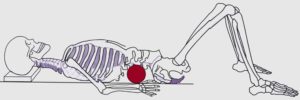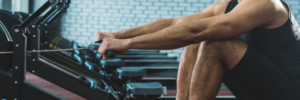
3 Important Takeaways I Found from Graduating with a Master’s Degree in Human Kinetics
On Monday, I officially graduated from the University of Windsor with a Master of Human Kinetics, focus in exercise physiology. I started the program back in the fall of 2015 with the intentions of furthering my education and upgrading myself as an exercise science professional. Initially, I intended to go into physical therapy school, but the few schools that I did apply to in Ontario, I didn’t get into and reverted back to a Master’s degree in Human Kinetics.
The Master’s in Human Kinetics was a bit of a backup plan, and it had a few nice incentives for myself. I was offered an entrance scholarship and a graduate teaching assistantship position, which covered for my full tuition. I didn’t have to put out any extra cash with these incentives, and I could upgrade myself as an exercise science professional.
Upon starting the program in the fall of 2015, I actually ended up landing a strength and conditioning internship with the Toronto Raptors (NBA). The internship involved me making a move to Toronto and lasted about half of the season. Some of my coursework for the Master’s program was put on hold, but it was more than worth it since I was getting first-hand experience training some of the best basketballers in the world. Note: I’ll admit, landing this internship was a bit surprising to me, but this was by far the best highlight of my whole Master’s degree.
After finishing my internship with the Toronto Raptors, I had returned to Windsor in January of 2016 to finish up my coursework for the Master’s program. By the end of 2016, I had finished my coursework and began to start my thesis project in early of 2017. My thesis project was tilted the “Physiological Effects of Adding a Percentage of Bodyweight during a 7 Week Stair Climbing Sprint Interval Training Program,” and it took me a little over a year to complete. I finished the whole project at the beginning of May 2018, and it was just in time to meet the deadline for the spring graduation (which was this past Monday).
The Master’s program has been quite the journey, and there have been many experiences that I am forever grateful for. Completing a strength and conditioning internship with the Toronto Raptors, as well as doing a major thesis project has provided me with both a hands-on and research experience, which I feel has made me a better practitioner and scientist.
In addition to my internship and doing a major thesis project, here are 3 the biggest takeaways that I found from doing a Master’s in Human Kinetics/Exercise Science. Note: I hope that some of this information provided below can help anyone who may be contemplating a graduate degree in human kinetics/exercise science. My intentions aren’t to convince you to do a human kinetics/exercise graduate degree, but to give you a better understanding of what to possibly expect.
1. Presentation Skills – Going through graduate school, I found that the courses I took, a lot of them involved delivering lectures/presentations to professors and classmates. This was much different than my undergraduate degree since students would just come to class and listen to the professor lecture. In graduate school, there was a lot more interaction among peers, which I felt provided myself with an opportunity to develop my presentation and speaking skills. Note: I was never a strong presenter/speaker and to this day I would consider myself pretty decent at best.
Also, going through a major thesis project, I had to propose my research idea and defend it to a committee of advisors that were set out to be critical of my research. Being put on the spot in front of your advisors and peers was definitely a nerve-racking experience, but also a good opportunity to enhance my presenting skills. Note: I was very fortunate to have an advisor that was very nit-picky when it came to developing and delivering a presentation. One thing that my advisor taught was me was that quality is absolutely key to keeping an audience engaged and entertained.
Real World Strength & Conditioning Application: Developing my presentation skills has made it easier for me to deliver information to my social media followers and clients in a clear and concise way. Whether, I’m giving an educational webinar on youtube or just trying to explain a topic to my clients, a lot of these presentation skills that I developed through graduate school have been paying off.
2. Researcher – Reading over 100’s of journal articles and doing a master’s thesis project during my graduate degree, I gained a lot of experience in understanding research. I’ll admit before doing my Master’s degree, I never had a good understanding of reading research or identifying what is good versus bad research (e.g., good statistics versus poor statistics). Having the experience of doing a master’s thesis project opened my eyes to the extensiveness of becoming a scientist.
Real World Strength & Conditioning Application: Having a good understanding of research has made it easier for me to apply the findings from research studies into a real-world strength and conditioning scenario. Many of the clients that I work with today currently deal with low back pain and have experienced great success in working with me. However, a lot of this success would not have been possible if I didn’t have a strong understanding of low back pain and spine research.
3. Critical Thinker – One thing that I learned over the years from doing my graduate degree is never take things at face value and that every research finding leads to a new question. For example, in my study the “Physiological Effects of Adding a Percentage of Bodyweight during a 7 Week Stair Climbing Sprint Interval Training Program”, we didn’t see any further improvements in aerobic fitness or lower body peak power with adding a weighted vest (10-20% BW) to individuals performing Stair Climbing Sprint Interval Training 3x per week, for 4 sets at 1:6 work to rest ratio (15 second: 90 second) over a 7 week period when compared to a non-weighted group.
Our initial intentions were we would see further improvements with the added weight (progressive overload), but we didn’t see that. We suggested that the added weight (10-20% BW) may not have been sufficient enough to stimulate changes or the work interval (15 seconds: 90 seconds) may have been too short to see changes. It’s hard too specifically say, but our findings only prompted for more future research to be done.
Real World Strength & Conditioning Application: Often people may see devices or exercise equipment advertised as being the next best performance enhancement tool. However, that’s not the case with a lot of equipment out there, and in many cases, it’s the context that matters. For example, in our study we proved that adding a weighted vest (10-20% BW) to Stair Climbing Sprint Interval Training using the protocol of training 3x per week, for 4 sets at 1:6 work to rest ratio (15 seconds: 90 seconds) over a 7 week period had no additional effect on improving aerobic fitness or lower body peak power when compared to running without any added weight. People need to cautious with equipment and devices they are using, as the advertised benefits or “theory” behind them may not always prove to be true.
Final Thoughts
Completing a Master’s Degree in Human Kinetics/Exercise Science has been a very rewarding experience. Being able to work directly with a professional basketball team in a strength and conditioning role, as well completing a major thesis project are definitely experiences I believe will only continue to pay off as I move forward on my strength and conditioning journey.
Salute,
Remi













